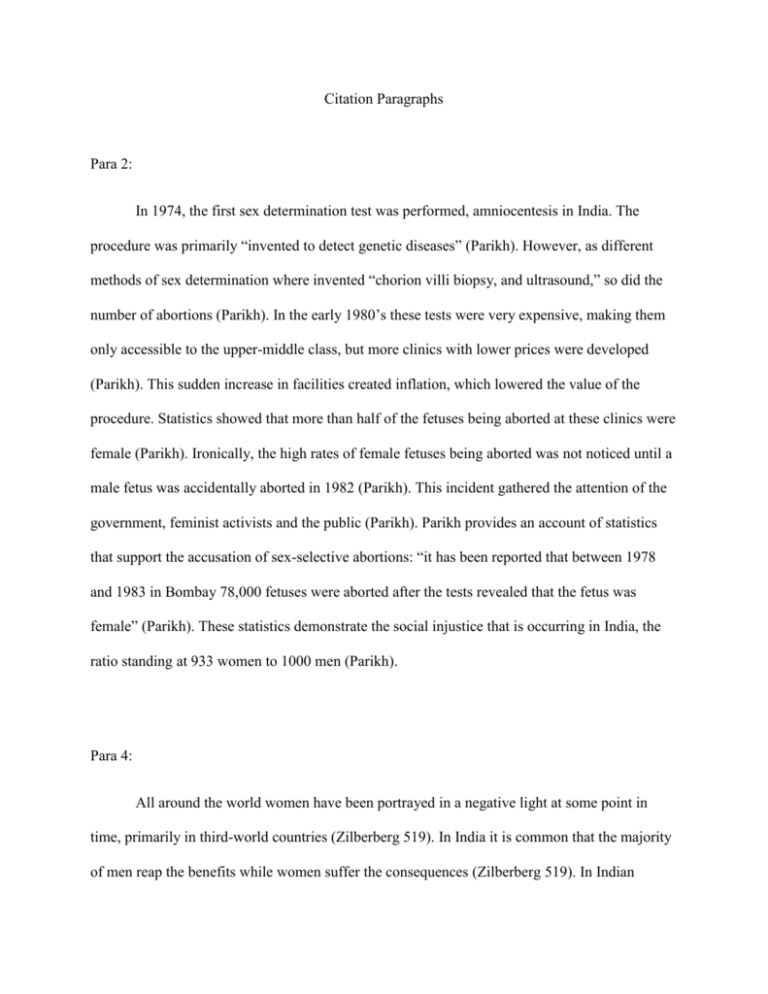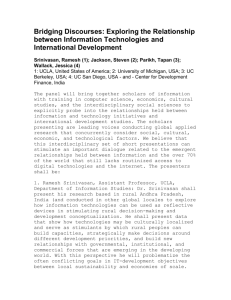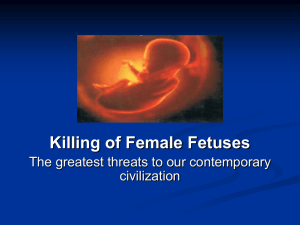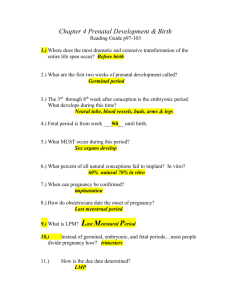Citation page and Paragraphs for research ethics
advertisement

Citation Paragraphs Para 2: In 1974, the first sex determination test was performed, amniocentesis in India. The procedure was primarily “invented to detect genetic diseases” (Parikh). However, as different methods of sex determination where invented “chorion villi biopsy, and ultrasound,” so did the number of abortions (Parikh). In the early 1980’s these tests were very expensive, making them only accessible to the upper-middle class, but more clinics with lower prices were developed (Parikh). This sudden increase in facilities created inflation, which lowered the value of the procedure. Statistics showed that more than half of the fetuses being aborted at these clinics were female (Parikh). Ironically, the high rates of female fetuses being aborted was not noticed until a male fetus was accidentally aborted in 1982 (Parikh). This incident gathered the attention of the government, feminist activists and the public (Parikh). Parikh provides an account of statistics that support the accusation of sex-selective abortions: “it has been reported that between 1978 and 1983 in Bombay 78,000 fetuses were aborted after the tests revealed that the fetus was female” (Parikh). These statistics demonstrate the social injustice that is occurring in India, the ratio standing at 933 women to 1000 men (Parikh). Para 4: All around the world women have been portrayed in a negative light at some point in time, primarily in third-world countries (Zilberberg 519). In India it is common that the majority of men reap the benefits while women suffer the consequences (Zilberberg 519). In Indian society, women are viewed as uneducated waste of space and money, and men are praised for their financial stability and their versatility in the work world (Zilberberg 519). As if the women of India don’t have enough on their plate, some are quick to blame the women for aborting their children. For example, feminist activist feel that the women who are abortion their female fetuses are giving the women of India a “bad name” (Zilberberg 519). However, Julie Zilberberg thinks differently: “women have lived restricted and burdensome lives because they are women, why would they want to bring a daughter into such scrutiny?” (519) Having a boy not only ensures success for the future of their children, but can also bring them success as well (Zilberberg 518). The human instinct to achieve personal success creates a problem with prohibiting these discriminatory acts. Some perceive that if abortion were banned altogether then the conflict would be alleviated (Zilberberg 519). Contrary to the belief of banning abortion, Zilberberg argues “if we take away the civil rights of women, we will not only be limiting their autonomy, but we would be falsely accusing women of a crime they did not commit” (519-520). Limiting this one right will just ensure the continuation of the practice as well as the existence of sexist discrimination (Zilberberg 519). Works Cited Hudson, Valerie. “The Missing Girls of China and India: What is Being Done?” Cumberland Law review 41.1 (2011): 67-78. Print. Hvistendahl, Mara. “Unnatural Selection.” Psychology Today. Sussex Publishers Inc., July 2011. Web. Aug 2011. Parikh, Manju. “Sex-Selective Abortions in India: Parental Choice or Sexist Discrimination?” Feminist Issues; Fall90, Vol. 10 Issue 2 (2009): 14,19-32. Print. Zilberberg, Julie. “Sex-Selective Abortion for Social Reasons: Is it ever Morally Justifiable?” Bioethics 21.9 (2007): 517-519.Print.










